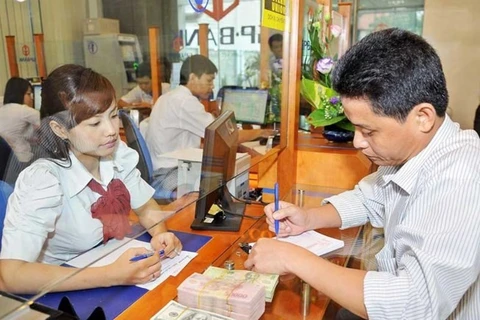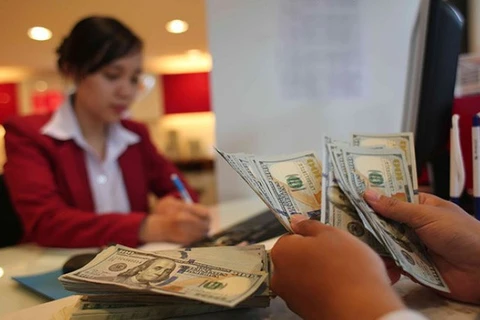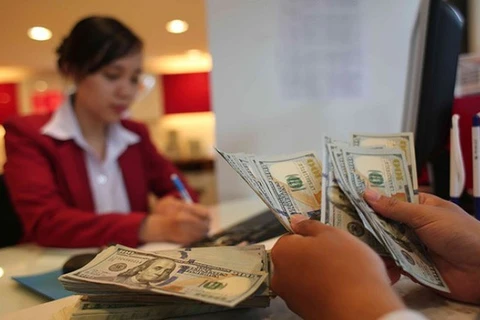The restriction on foreign currency lending actually reduces the "virtual" supply and demand of foreign currencies and if viewed from a macro perspective, this will contribute to reducing dollarisation in the economy, said Deputy General Director of the Vietnam International Bank (VIB) Le Quang Trung.
From October 1, 2019, credit organisations and foreign banks will stop providing medium and long-term foreign currency loans for offshore payment of imported goods and services. Experts said it is the right decision that exerts positive impact on the economy.
Reducing "virtual" supply-demand of foreign currencies
According to the Circular No.42/2018/ TT-NHNN on amendments and supplements to several articles of the Circular No. 24/2015 / TT-NHNN, after September 30, credit organisations and foreign bank branches will stop medium and long-term foreign currency lending to pay for imported goods and services even when borrowers have enough foreign currencies from their business revenues.
Previously, short-term foreign currency loans used for payment of imported goods and services, even when borrowers have enough foreign currencies, ended from March 31, 2019.
Leaders of credit organisations said banks are only allowed to offer short-term foreign currency loans for imports payment when borrowers have enough foreign currencies from their revenues.
Major petrol importers with annual import quotas assigned by the Ministry of Industry and Trade, exporters and offshore investment enterprises (for projects approved by the National Assembly or the Prime Minister) are also entitled to short-term foreign currency loans.
Banking experts said the State Bank's tightening of foreign currency credit is meant to realise the policy of anti-dollarisation in the economy, towards the gradual transition from borrowing - lending to buying - selling foreign currencies.
Accordingly, the banking development strategy till 2025 with orientations to 2030, approved at the Decision No. 986/QD-TTg dated August 8, 2018, targets gradually reducing foreign currency credit, striving to achieve below 7.5 percent in the ratio of foreign currency deposits to the total means of payment in 2020 and 5 percent by 2030, towards stopping foreign currency lending so that the dollarisation of the economy could be basically overcome by 2030.
Inevitable trend
Director of the HSBC Vietnam Treasury and Capital Markets Ngo Dang Khoa said new regulations under the Circular No.42 do not affect much companies.
A VIB leader said the bank’s outstanding loans in foreign currencies have been significantly downsized in recent years, adding that the halt of mid and long-term lending does not affect much of its business activities.
The trend is also evident at some commercial banks with State capital. For example at Vietcombank, foreign currency deposits dropped to over 135.9 trillion VND in six months of this year, compared to the total deposit of more than 870.8 trillion VND, up 8.6 percent.
Similarly at VietinBank, foreign currency deposits fell to over 54.2 trillion VND (2.35 billion USD), or 6.4 percent of the total deposits. At BIDV, the rate of foreign currency deposits decreased from 5.1 percent to 4.5 percent, standing at over 47.8 trillion VND.
Such movement showed that people tend to save more money in Vietnamese dong.
However, up to now, despite having nine months for financial plan preparation, many businesses still have the "waiting" mentality.
Nguyen Tu Anh, Deputy Director of Hoa Lu Handicrafts JSC, lamented that it will be stressful for businesses if switching to buying and selling foreign currencies. Despite having export revenue, her firm still has to borrow foreign currencies to import many materials for exports such as packaging, plastic bags, and many others.
According to her estimate, if her company can no longer borrow medium and long-term foreign currency loans, the total production cost will increase by 35 percent.
Experts said when it comes to issuing a policy, authorities previously calculated to harmonise the interests of parties concerned instead of focusing solely on businesses or the goal of fighting dollarisation in the economy.
However, Dr. Hieu also acknowledged that there should be involvement of ministries and agencies in order to sustainably ease dollarisation in the economy./.

























